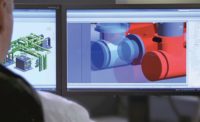When designing a firestopping system, the number one goal is to protect building occupants from accidents caused by fire, water and poisonous gases. The secondary goal is to satisfy code requirements to avoid rebuilds, which can lead to missed deadlines and going over budget.
Because occupants’ safety and your reputation are at stake, “good enough” doesn’t apply to firestopping system planning.
Consider these three best practices to protect customers and your business from the dangers of faulty firestopping methods.
-
Call local building inspectors and fire marshals ahead of time. Firestopping systems are more difficult to review after they’re installed. Before starting a job, consult with a local building inspector and fire marshal to ensure your plans comply with local codes. Include the penetrating items you intend to use as well as the listing details for each specific application.
-
Verify your firestopping products’ testing processes. Products that have not passed code required testing standards ASTM E814 and/or UL 1479 should not be considered on any project. These testing standards ensure when the products are properly installed, they will perform as needed to stop the migration of flames and toxic gasses from spreading through a building structure.
Check each product in your firestopping plan has been tested by a reputable third-party entity before beginning.
-
Don’t rely on makeshift methods. Though it may be tempting to piece together firestopping methods to reduce costs, it’s riskier than using independently tested, fire-rated firestopping systems and could cause more problems in the long run.
One problem you may encounter with makeshift methods is a lack of reliable waterproofing, which can lead to water damage and mold. And while these methods may be slightly more affordable, they’re often more time-consuming to install. Choose a firestopping system designed to comply with local building codes and save time on installs.
Set yourself up for success by following these best practices before beginning your firestopping plan. With these guidelines in mind, you’ll save time, money and hassle on all of your jobs to come.
HoldRite is part of the RWC family of innovative brands, which also includes SharkBite, Cash Acme and more. Learn more at www.holdrite.com.



